Constructor, remaining in the shade
The name of Ivan Pavlovich Bratukhin is known far less than the names of other helicopter makers. However, it was the helicopters Bratukhin who gave the practical and scientific base, the use of which accelerated the creation of Mil and Kamov helicopters, which made our country the world leader in the field of helicopter engineering. The results of the work of Ivan Pavlovich are weighty and diverse, they are difficult to overestimate. He created the first in the country serial samples of helicopters, carried out a promising design of new types of aircraft, helicopters, airplanes, and helicopters with a jet compressor drive (Yuriev assessed the research results as exceptional), revealed prospects for machines with high speeds and payloads, as well as various VTOL circuits . A well-known book by Bratukhin, "Designing helicopter designs," Kamov called the first in the world literature, where the methodology for selecting the basic parameters and design elements of helicopters is systematized and scientifically grounded.
Ivan Pavlovich Bratukhin was born in 1903, in the village of Yaschera, Sumy District, Kirov Region. His father worked as a bricklayer in the Urals. Ivan, in the incomplete seventeen years, also left for this mountain region. He just arrived at the university, at the work school in Yekaterinburg. Three years later, a peasant boy from the Vyatka province became the owner of the right "to enroll in one of the general or technical higher educational institutions out of turn." From Ekaterinburg - to Moscow, from the working faculty - to the Moscow Technical Technical University.
Engage only in learning, however, had not long. Starting from the third year, Ivan Bratukhin is already on a permanent job at TsAGI. In this scientific institute he entered the experimental-aerodynamic department (CJSC), which was headed by professor B.N. Yuriev, who proposed and built a helicopter in 1909-1912, or, as it was later called, a single-rotor helicopter with a compensating screw. From that time began their creative collaboration, which lasted for many years. In TsAGI Yuriev created a separate helicopter group, which included young engineers - the pioneers of the domestic helicopter industry.
The young trainee got into the atmosphere of creative atmosphere. He sought to master the necessary knowledge, listened to the leading scientists of TsAGI and, he himself sometimes appeared in print with articles about TsAGI. In 1928, as part of a group of students at MVTU, Bratukhin set off on a three-month business trip abroad, for pre-diploma practice to get acquainted with the design of autogyros, calculation methods of helicopters and flight test results.
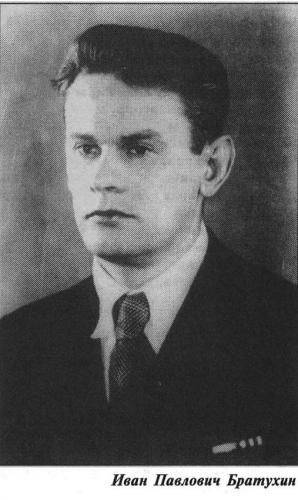
And most importantly, he was actively involved in the work of the helicopter group, which was transformed into 1928-m into a department of special structures (OOK). It is there that the design begins, and then the construction of the first domestic helicopter TsAGI-1-EA, performed on a single-rotor scheme with a four-blade rotor, driven by two rotary engines.
The rotor torque of the main rotor was balanced with the help of four tail rotors installed in pairs in the nose and tail parts of the truss fuselage. On this helicopter, the construction of which was headed and on which A. Cheremukhin flew, 1932 achieved outstanding flight characteristics for its time, including the height 605 m. These results have remained unattainable for foreign helicopters for many years.
After graduating from high school, a young engineer-aeromechanic in the same year he entered the postgraduate school of the Moscow Aviation Institute, just separated from the Moscow Technical Technical University. And he continued his studies again on the job, that is, from participating in the creation of the first Russian helicopter TsAGI-1-EA.
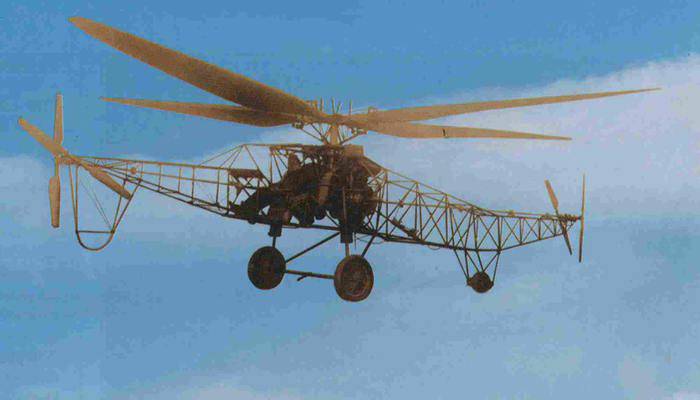
Like any new business, domestic helicopter construction was given very hard. TsAGI-1-EA started flying, but often broke during landing, and once, reaching a height of 605 m (at the official world record 18), it went into an uncontrolled fall, like a maple leaf. For the pilot, it almost ended in tragedy. Only before the very ground he managed to seize the machine again.
One of the problems of the new aircraft was the bearing screw of the “rigid” construction. The machine did not have the necessary stability. The chief designer is still difficult to manage and his permanent test-pilot Alexey Cheremukhin (an extraordinary person and specialist, a full Georges cavalier, later a professor, deputy general designer A.N. Tupolev) noticed that he was in flight - as the tip of a needle. And here I had to say my word to the young designer. The bearing screw on the proposal of Bratukhin became combined: three large-hinged blades of large diameter created the necessary lifting force, and three blades of smaller diameter, which were rigidly attached to the screw shaft, provided control of the helicopter.
Tests have shown a significant increase in the sustainability of the upgraded design, called TsAGI-5-EA. The recognition of the designer’s creative contribution was the appointment of the head of the B team to the special structures department of TsAGI, which was entrusted with the design of helicopters. To understand the significance of this nomination, it is enough to recall that in the brigade “A” such well-known designers as N.I. Kamov, V.A. Kuznetsov and N.K. Strizhinsky. A team of aerodynamics operated in the KLO and was headed by M.L. Miles
The three-year test of the modernized design, TsAGI-5-EA, provided invaluable information about the main operating modes of the new aircraft, the generalization of which was a major contribution to the theory and practice of helicopter engineering.
And in the brigade “B”, according to the ideas of its head, the development of the project of the two-seat TsAGI-11-EA helicopter of a fundamentally new scheme was already underway. Rotary helicopters named such devices Nikolay Ilyich Kamov. The design was implemented the principle of rational combination rotor and wing. The rotor provided vertical takeoff and landing, as well as flights at low speeds. The wing, which has a much higher aerodynamic quality than the main rotor, was supposed to create most of the lifting force on the flight modes.
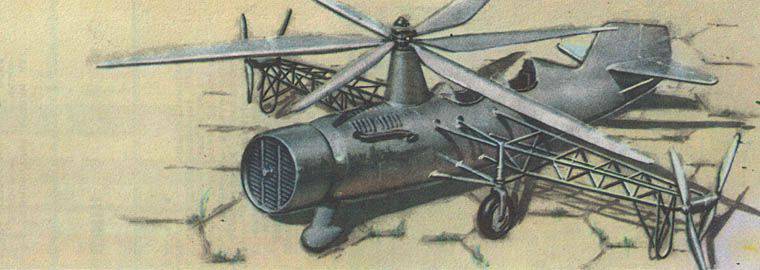
To create thrust during translational flight, two screws were used at the ends of the wing (the scheme proposed earlier by BN Yuryev). But a fundamentally new in this case was the combination of this scheme with the wing. During the hovering, these screws, creating forces directed back and forth, parried the reactive torque of the rotor, and during translational forces created the necessary thrust force. It is worth noting that a similar approach 30 years later was used by I. Sikorsky for his high-speed S-66 helicopter. On it, the compensating propeller, called the rotoprop, turned back at high flight speeds and created additional thrust.
TsAGI-11-EA was equipped with a high-power imported engine. Almost everything in this project was new and unusual. Experts and now claim that the project of this helicopter was much ahead of its time. However, the fate of the new is always complicated, and sometimes dramatic. In real machine design, the calculations were not entirely justified. For a number of reasons, the refinement of the device did not take place. Later, the car under the leadership of St. George's was converted into a helicopter. But this modernization did not save it, this time it was the Great Patriotic War.
At the beginning of 1940, at the initiative and under the leadership of Yuriev, an experienced helicopter design bureau was created at the Moscow Aviation Institute. Its core was made up of PAGI OOK employees. Soon OKB MAI headed by Bratukhin.
In a short time there was developed a draft twin-screw helicopter transverse scheme "Omega". It was reviewed and approved in July 1940. It was a double helicopter with two engines located at the ends of the trusses, to which were attached pivotally hanging screws with metal blades. Created during the war, when the institute and design bureau were forced to evacuate to Alma-Ata, then return to Moscow again, the helicopter showed quite good data on factory tests. The modified design "Omega-II" has incorporated a number of new solutions. This helicopter took part in the Tushino aviation parade 1946 of the year.
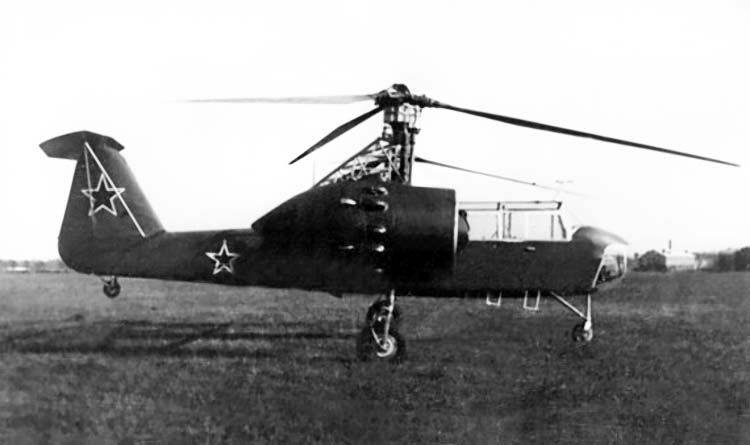
There was a question about the practical application of new machines. The OKB, which was headed by Bratukhin, was commissioned to create helicopters on the basis of the Omega II to adjust artillery fire. The new aircraft, equipped with two Pratt-Whitney R-985 piston engines, received the designation G-3 and became the first domestic helicopter launched into serial production and entered the army. 13 copies were built to familiarize with the new type of aircraft pilots.
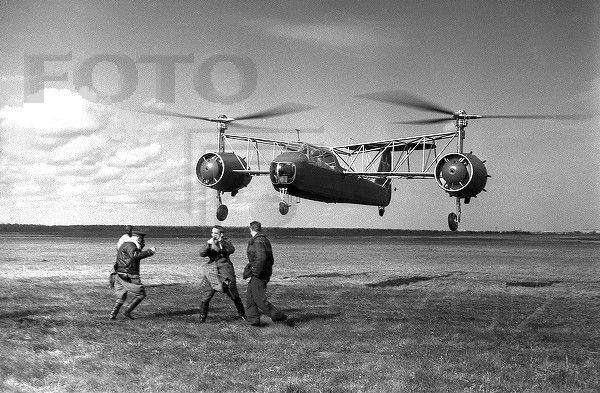
For these works in 1945, Bratukhin and Yuriev were awarded the State Prize, and a group of OKB employees were awarded orders.
The launch of the new machine for mass production with all the urgency raised the question of developing a domestic engine specifically for the helicopter. Under the leadership of Alexander G. Ivchenko, he was created. At its base, the design is being upgraded and given the designation G-4. She also produced a small series. For the first time in our country, the G-4 demonstrated the possibility of horizontal flight of a helicopter in case of a single engine failure and comprehensive tests were performed with landings in the autorotation mode with both engines turned off.
Experimental specimens of the six-seater passenger helicopter B-5, its sanitary modification B-9 and the helicopter - artillery spotter B-10 were also built according to the developments of the Bratukhin Design Bureau.
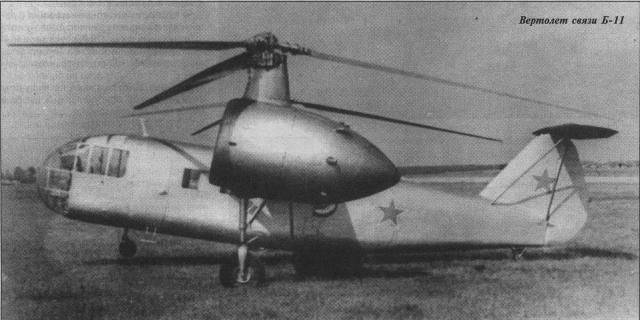
The latest modification of this machine was the communications helicopter B-11. The figure was symbolic, as it completed an eleven-year history OKB MAI, transformed in 1948 into OKB-3 of the Ministry aviation industry, led by now the chief designer Bratukhin. Unfortunately, the disaster due to a gross manufacturing defect deprived the "eleventh" future. And although the car was announced for the competition, the fate of OKB-3 was a foregone conclusion: in 1951 it ceased to exist.
I.P. Bratukhin failed to translate all his ideas into metal. Several designs of cross-helicopter helicopters remained in the drawings: a transport helicopter with two M-82FN engines for transporting an 30 soldier with a take-off weight of the order of 10000 kg and a multi-purpose four-seater with two M-14 engines.
Helicopters designed by I.P. Bratukhin became the first domestic helicopters who actually flew, were well managed and were adapted for practical use. It was on these machines that a number of ways of dealing with harmful and dangerous resonances and self-oscillations were worked out, the methods of static and dynamic tests of helicopter units were determined. The development of autorotation modes was invaluable for the further development of helicopter building in our country.
From 1953, Bratukhin headed parametric studies carried out at TsAGI for promising super-heavy transport helicopters and “flying cranes” with a payload of about 60 tons, using a jet compressor rotor drive, as well as with turbojet engines at the ends of the blades. The results of these studies allowed to establish the disadvantages and advantages of various methods of jet drive, and also to determine the required technical level for the creation of such heavy transport vehicles.
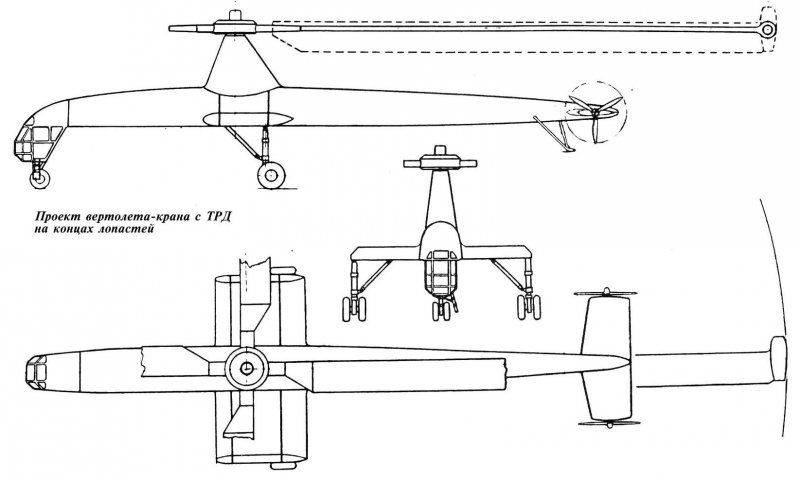
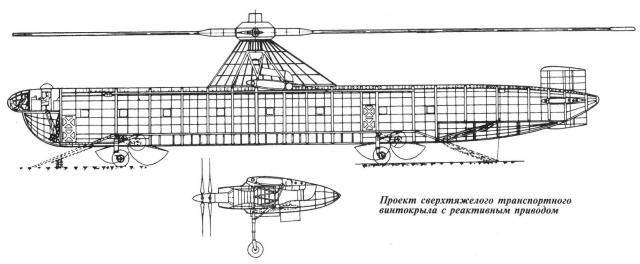
A year later, a design team was created at MAI to design a vertical landing and take-off airborne transport (VTOL) aircraft. The work was conducted under the direction of B.N. Yuriev and I.P. Bratuhina.
VTOL created under the power plant of the four turboprop engines NK-12МВ power 12000 hp, these engines were used on a strategic bomber Tu-95. NK-12MV were supposed to set in motion six-meter coaxial propellers.
The original layout was developed by VTOL. The aircraft was supposed to be upright on takeoff and landing. TVD was placed in gondolas at the ends of the cruciform wing of small elongation (more reminiscent of the rocket plumage). The fuselage of the aircraft had a rectangular cross section; a double crew cabin was located in its nose, and three large cargo compartments were located behind it. The armchairs should have hinges with fixation in order to ensure comfortable accommodation for the crew and paratroopers when the aircraft changes position during takeoff and landing.
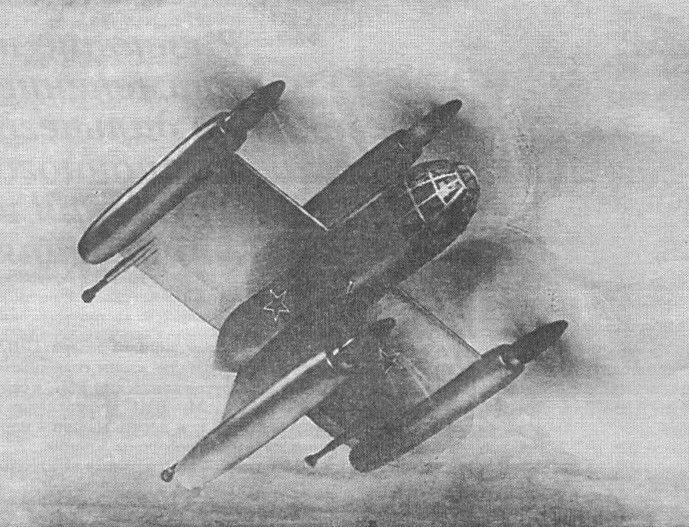
In 1955-1956, under the direction of I.P. Bratukhin, BNTI TsAGI conducted research and other options for VTOL aircraft with propellers. The most developed was the scheme with a rotary wing and driven TVD coaxial propellers. The power plant consisted of a pair of the same NK-12 MB. Their capacity ensured the transportation of cargo with a total weight of up to 5 t at a cruising speed of the order of 700 km / h and a range of at least 1200 km.
The variants of VTOL aircraft with two, four and even six coaxial screws located on the rotary wing were also investigated. The scheme was also worked out with two swivel wings, which were located in tandem. Later, similar schemes were investigated in the USA and Germany by Boelkow (experimental samples were built).
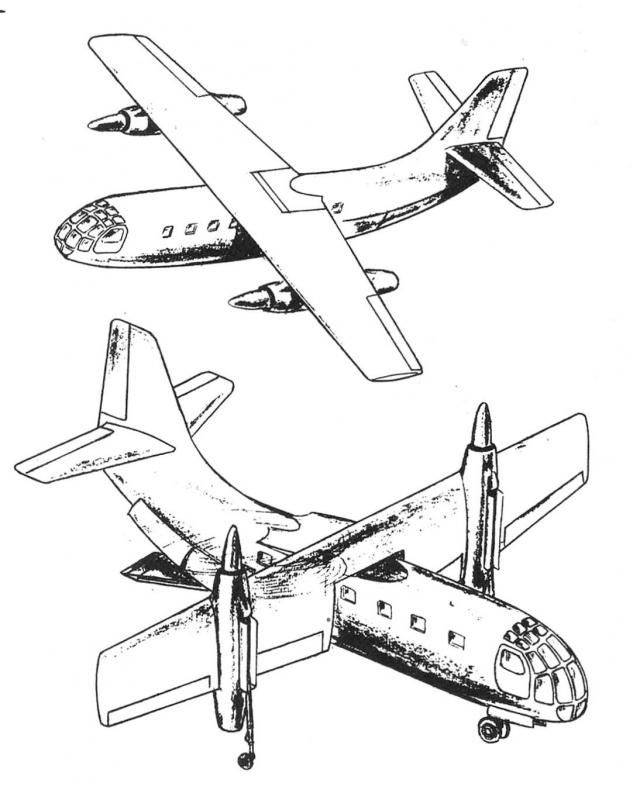
I.P. Bratukhin from 1957 of the year and almost until his death in 1985 worked as head of the department "Design and Design of Helicopters" MAI, generously transferring his experience and knowledge to young people. 16 March 2003 a memorial plaque was installed on the hull No. 24 of the Moscow Aviation Institute.
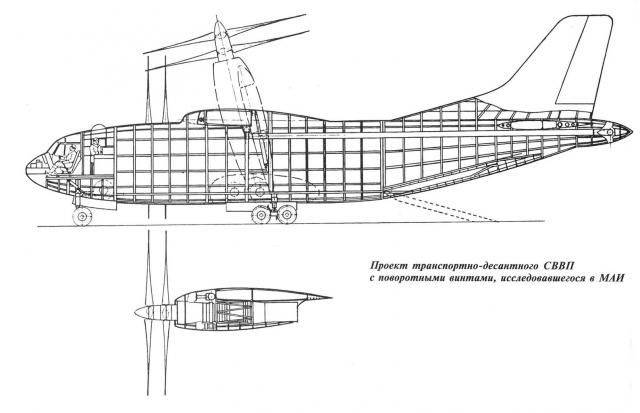
Sources:
Korshunova G. A bold experimenter // Helicopter. 2001. No.2. C.2-4.
Ruzhitsky E. Aircraft Designer and Scientist // World Aircraft. 1998. No.3. C. 12-19.
Ruzhitsky E. Aircraft Designer and Scientist // World Aircraft. 1998. No.4-6. C. 14-20.
Ruzhitsky E., Khamov V. Tramplin // Wings of the Motherland. 1995. No.5. C. 29-30.
Mikheev V. On the attempt to create a jet helicopter // Wings of the Motherland. 2001. No.9. C. 9-10.
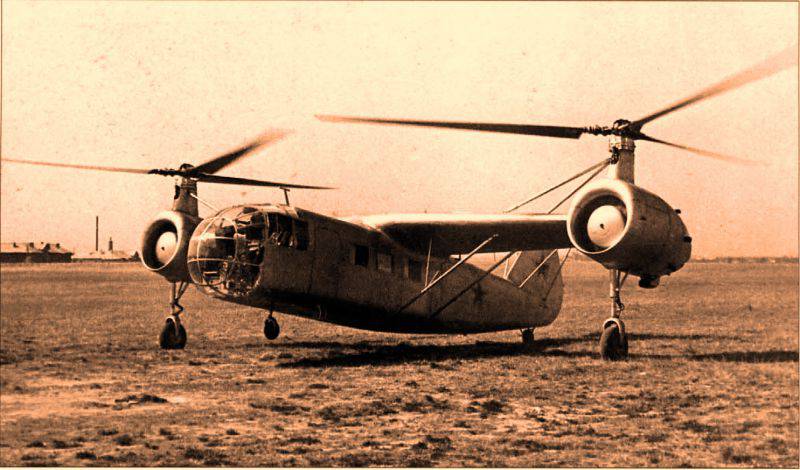
Information